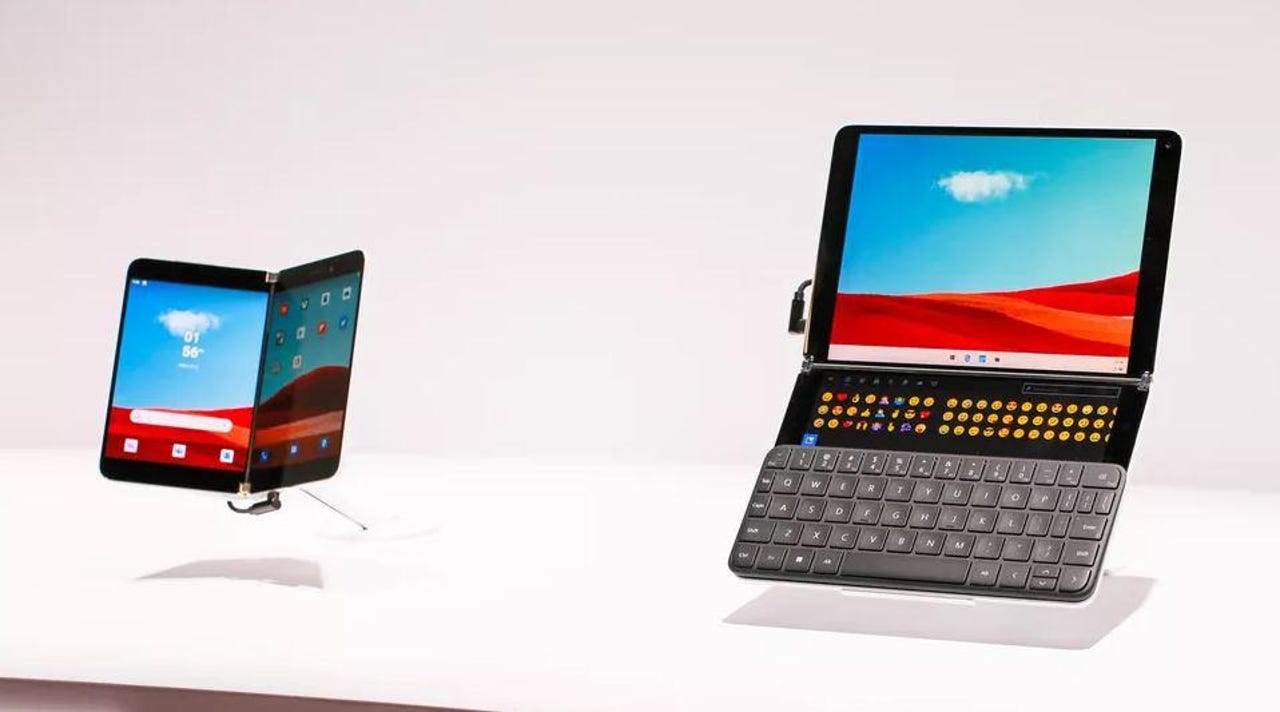What's Microsoft's developer story for its new dual-screen Surface devices?

More Microsoft
Up until last week, all announced Surface-branded PCs and tablets were built to run Windows 10. But, next year, an Android-based Surface device -- the dual-screen Surface Duo -- will join the Surface family. What does that mean for developers interested in targeting the Microsoft ecosystem?
This is a key question since Microsoft execs last week claimed the reason they were showing off prototypes of the Surface Neo dual-screen tablet and Surface Duo phone a year ahead of availability is to start bringing developers into the mix.
Beyond asking developers to start thinking about how they could update, modify and develop applications that take advantage of two side-by-side screens, what else is Microsoft going to pitch them? Officials didn't really say, but here are a few points I believe they'll be emphasizing over the coming weeks and months.
From an external hardware perspective, the Neo and Duo devices look a lot alike. But inside they are quite different. The Neo, the device with two, 9-inch screens, will run Windows 10X, a new variant of Windows 10 designed specifically for dual-screen and foldable devices. The Duo, with two 5.6-inch screens, will be running Android. (And for all the Microsoft users wondering if Android is just a placeholder for some other Windows 10 flavor, the answer is no. The Duo is an Android device that will feature the Google Play Store, full stop.)
I'd assume the Neo and Duo will be able to be tied together using Microsoft's Your Phone app. That app, already available for Android phones and iPhones, allows Windows 10 users to see their latest photos and, in Android's case, interact with notifications, messages and phone apps right from their Windows 10 PCs.
But there will be other integration points and commonalities between the two devices.
Microsoft Chief Product Officer Panos Panay has been trying to discourage folks from calling the Duo a phone, even though Microsoft touted, first and foremost, the ability of the device to make and receive phone calls when showing off the product at the Surface hardware launch last week. We've also heard that the larger Neo dual-screen device also will be able to make/receive phone calls with a headset/earbuds, as it is an LTE device. Microsoft Teams and the various add-ons from third-party developers will likely play a big role here.
Must-see offers
Expanding beyond Teams, both the Neo and Duo likely will be Microsoft 365 devices, not just in terms of the Office and management/security apps they will run, but also in terms of the developer platform they support.
A quick refresher: The Microsoft 365 Developer platform is a real thing, not just a new brand slapped on Microsoft's programming interfaces. At its Build developers conference in May, Microsoft execs explained that the Microsoft 365 developer platform is a collection of a few, discrete pieces: The Microsoft Identity platform; the Microsoft Graph application programming interface (API) and the underlying knowledge substrate powering Microsoft's evolving conversational engine. The Fluid Framework -- a combination of a faster co-authoring environment and compound-document type environment -- also will likely be part of the M365 Developer platform.
This, not the operating system layer, is where Microsoft will be looking to get developers engaged with Surface Neo and Duo. Microsoft CEO Satya Nadella hinted as much, telling Wired last week that it's not the OS layer that matters, but the Microsoft Graph. (Thanks to former Softie and Amazonian Hal Berenson for driving this point home via a series of tweets last week.)
This year's Microsoft Ignite conference, its IT pro show, has a lot of developer content mixed in. If you look at the Ignite session list, a lot of this content revolves around identity, the knowledge substrate, and the Microsoft Graph. (There are even a couple of Fluid Framework sessions in there, for good measure.)
Above this middleware layer, there's also the user-experience (UX) layer. Because Microsoft has been working to modularize not just the core of Windows, but also the UX layer by separating the logic and expression of the UX, Microsoft should be able to make the Surface Neo and Duo look a lot alike even though they are running two different operating systems. The overall interface, in the staged demos we saw last week, made the two devices look very similar. The home screens and ways the apps are arranged look a lot alike. I'm sure this is by design.
While an app like Outlook isn't the exact same on Windows as it is on Android or iOS, many of the elements are similar and make use of similar gestures. My bet is Microsoft will appeal to developers to update their existing apps and write new apps so they take advantage of the commonalities across these devices the same way that the Outlook team already does.
Gestures like "spanning," via which an app can work seamlessly across the two screens is something that could be common across Surface Neo and Duo. The new start menu, taskbar, and action center will likely look a lot alike across the two devices, even though they aren't running the same OS underneath. And both will be more attuned for touch and pen interaction than the keyboard (though Microsoft will offer a magnetically attached small type keyboard, as well as the ability to use an external keyboard with Neo, at least).
Microsoft's next Build developer conference already is scheduled for late May 2020. That's too late for Microsoft to start engaging its developer community around dual-screen devices. I'm expecting we'll be hearing more sooner than that about how Microsoft plans to try to bring developers into the fold (see what I did there?) with its newest Windows 10 flavor and its first Android release.
